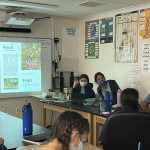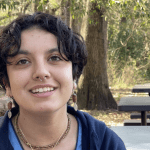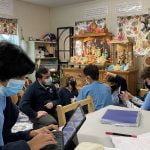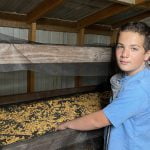Students Map Out a Sustainable, Eco-friendly Future
By Anandini Tikunov (8th-grade student) | Jan 23, 2022
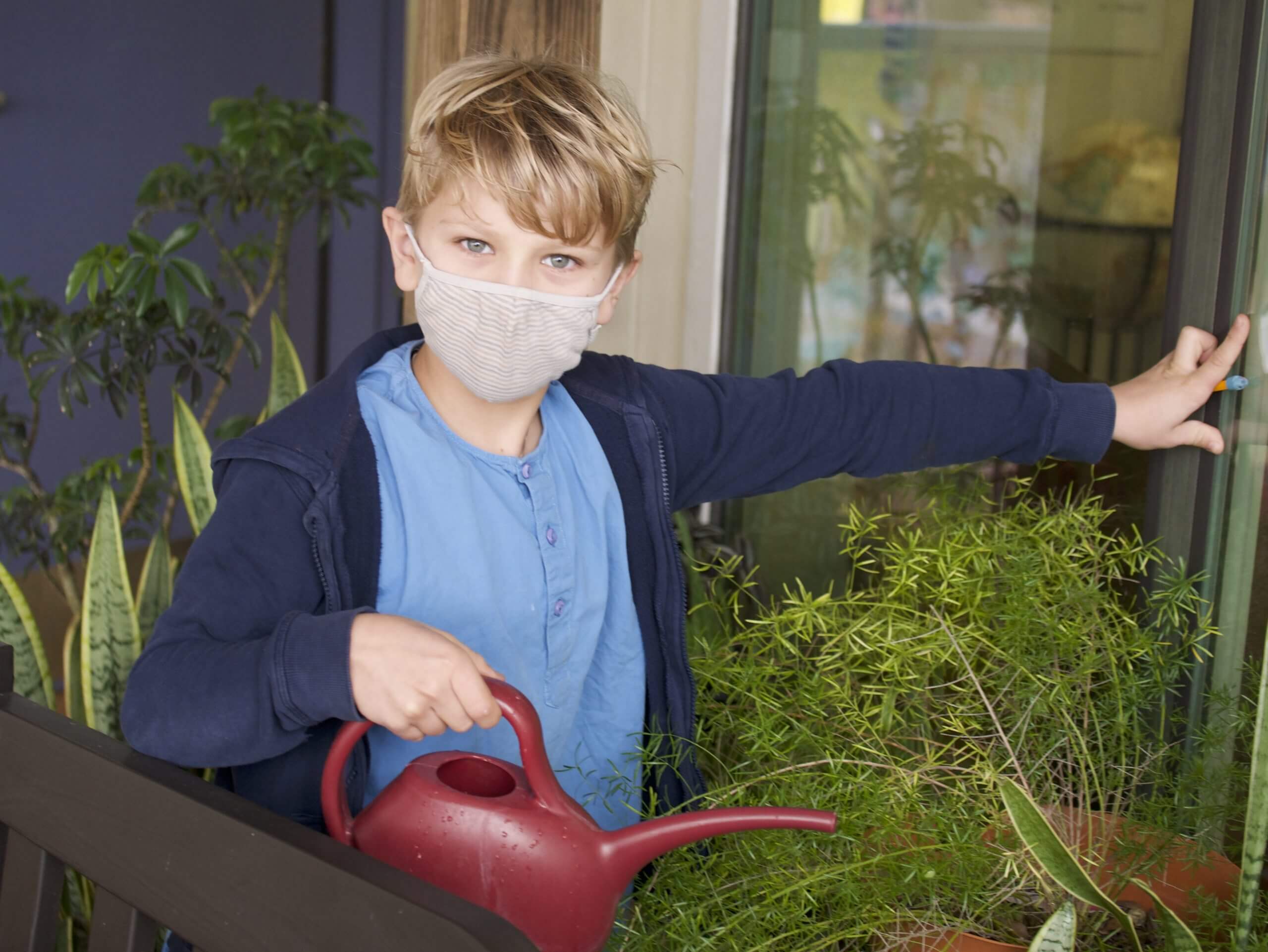
Alachua Students Map Out a Sustainable, Eco-friendly Future for their School
From January 3rd to January 14th, 2022, students at the Bhaktivedanta Academy North America (BANA) in Alachua, FL participated in an interdisciplinary project based on building a sustainable school. The project was executed by the middle school and high school student cohorts and their teachers. BANA is currently undergoing an expansion, and the school’s leaders wanted to involve the students in shaping the new school in the most ecologically healthy way possible. The subjects the students studied over the two-week project included but were not limited to: science, language arts, indigenous cultures, communication design, cottage industries, and even Vastu – the traditional Indian science of architecture.
 infographics created by students summarizing their findings
infographics created by students summarizing their findings
In studying cottage industries, the students learned about what is a cottage industry and how they are developed. They explored different types of cottage industries the schools could start. Some ideas that were explored were teas and spices, bee products, natural fibers, and sugar cane products. The students made brochures that described how they could create the different cottage industries and how they could benefit the school.
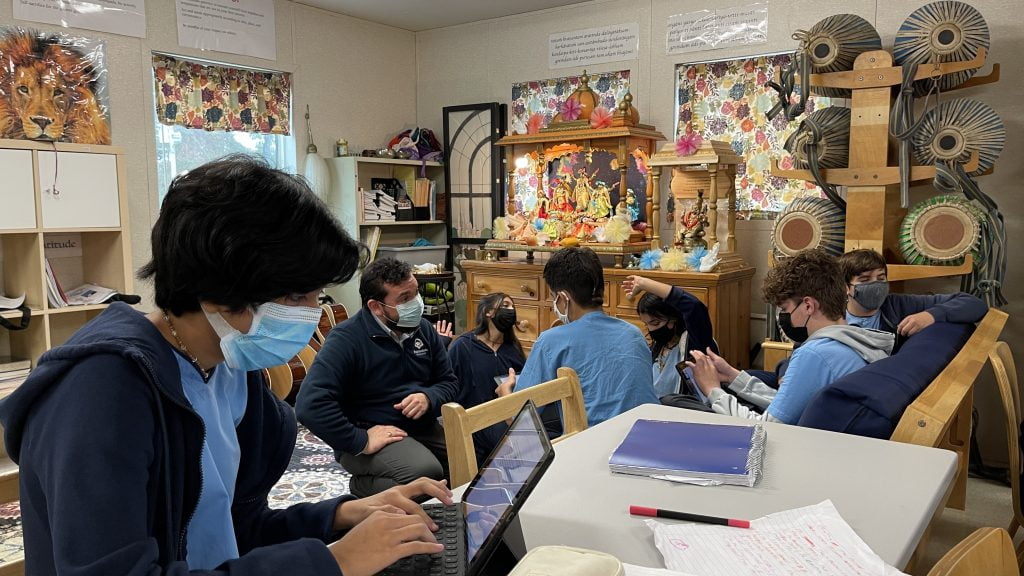 Students work in groups, practicing their collaboration and communications skills.
Students work in groups, practicing their collaboration and communications skills.
In 7th and 8th grade science, the students learned how to do an energy audit and investigated technologies that reduce the school’s energy consumption. They looked at various categories of consumption, such as water, heat, electricity, and waste, and researched local solutions to managing these categories with minimal environmental impacts. The 9th and 10th grade classes were focused on permaculture. They studied Vaishnava land ethics, as well as the 12 design principles of permaculture, how they apply to the permaculture ethics of Earth Care, People Care, and Fair Share, and how these ideas can be incorporated into the design of a new school. For instance, one of the students worked on how the five zones of permaculture impact how they could shape the school and what they could plant around it. In Vastu, the students learned about how the influence of demigods and celestial direction influence the function of the building. They used these principles to propose floor plans for a new school building.
 7th grade student examines the turmeric-drying station at the nearby eco-farm
7th grade student examines the turmeric-drying station at the nearby eco-farm
In language arts, the 9th and 10th grades made surveys to find out the needs of other students, teachers, and parents. The 7th grade and 8th grade wrote stories for a young audience based on Indigenous American themes about sustainability. The results of all of the research activities were summarized in either infographics, papers, or books that were shared with BANA leaders for their consideration.
Everyone was inspired by helping and taking part in planning the new sustainable, eco-friendly school for current and future students.









